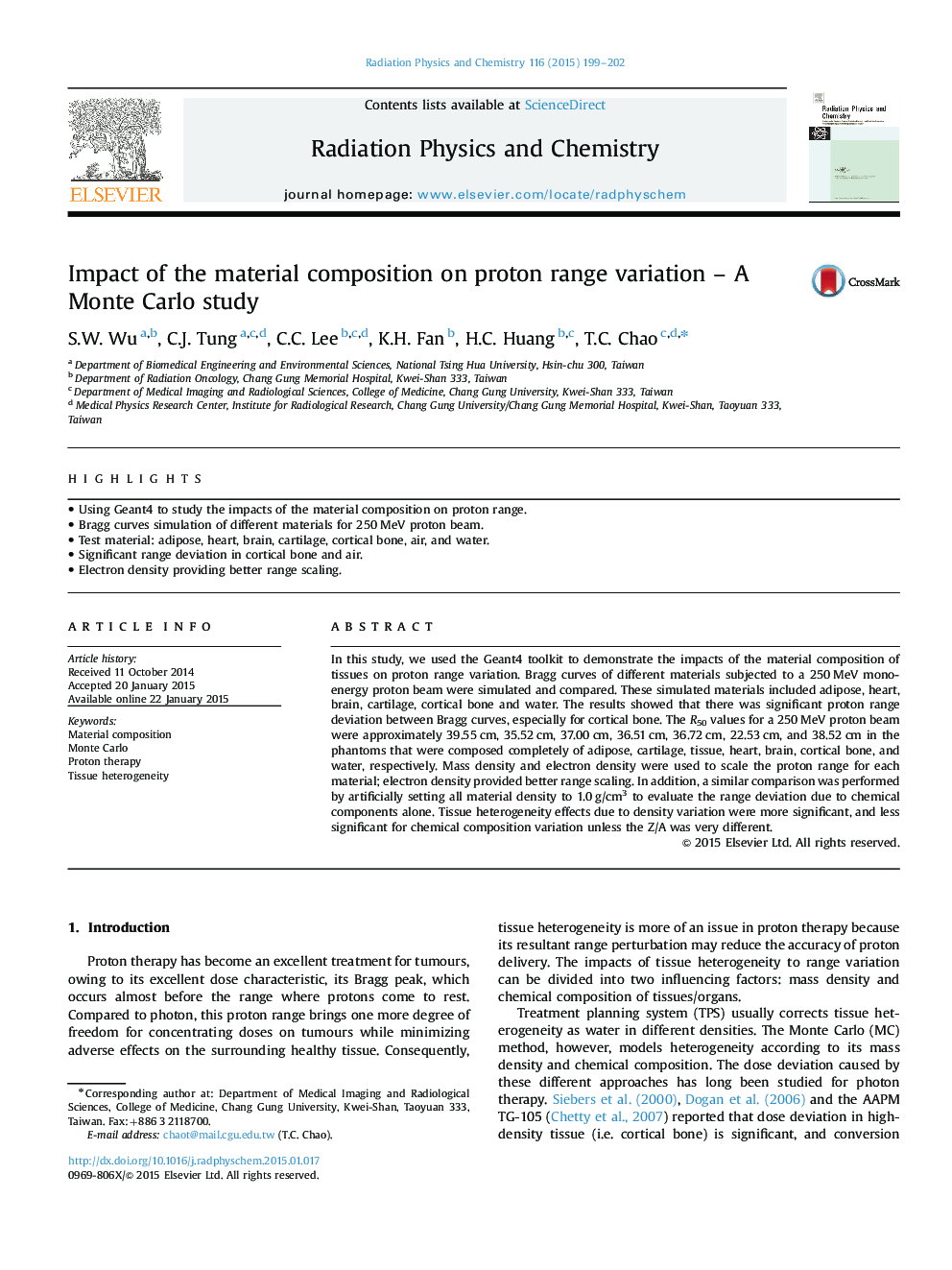| Article ID | Journal | Published Year | Pages | File Type |
|---|---|---|---|---|
| 8252616 | Radiation Physics and Chemistry | 2015 | 4 Pages |
Abstract
In this study, we used the Geant4 toolkit to demonstrate the impacts of the material composition of tissues on proton range variation. Bragg curves of different materials subjected to a 250Â MeV mono-energy proton beam were simulated and compared. These simulated materials included adipose, heart, brain, cartilage, cortical bone and water. The results showed that there was significant proton range deviation between Bragg curves, especially for cortical bone. The R50 values for a 250Â MeV proton beam were approximately 39.55Â cm, 35.52Â cm, 37.00Â cm, 36.51Â cm, 36.72Â cm, 22.53Â cm, and 38.52Â cm in the phantoms that were composed completely of adipose, cartilage, tissue, heart, brain, cortical bone, and water, respectively. Mass density and electron density were used to scale the proton range for each material; electron density provided better range scaling. In addition, a similar comparison was performed by artificially setting all material density to 1.0Â g/cm3 to evaluate the range deviation due to chemical components alone. Tissue heterogeneity effects due to density variation were more significant, and less significant for chemical composition variation unless the Z/A was very different.
Related Topics
Physical Sciences and Engineering
Physics and Astronomy
Radiation
Authors
S.W. Wu, C.J. Tung, C.C. Lee, K.H. Fan, H.C. Huang, T.C. Chao,
